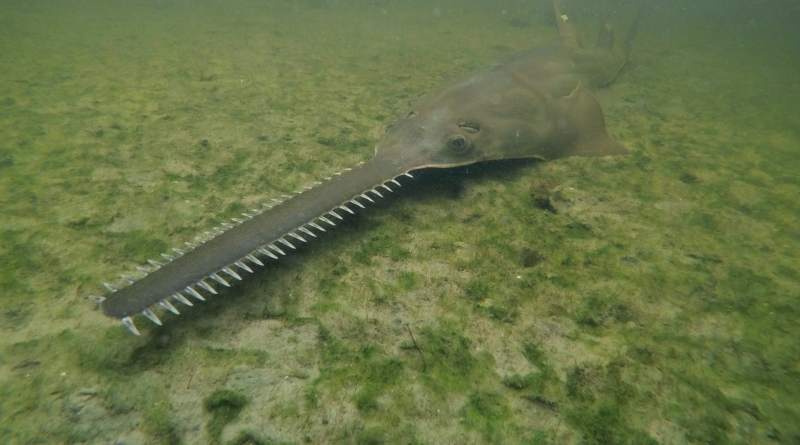Strange fish behavior in Florida sparks emergency government response – NBC News
Profile
Sections
tv
Featured
More From NBC
Follow NBC News
There are no new alerts at this time
The U.S. government is mounting an emergency response in an effort to save a unique and endangered fish found off the coast of Florida.
The details are strange. The National Oceanic and Atmospheric Administration said Wednesday that the Florida Fish and Wildlife Conservation Commission had received reports of “abnormal fish behavior, including spinning and whirling” affecting roughly 40 species of fish, and that there had also been reports of fish deaths.
Concerns center on the smalltooth sawfish, a species that is part of the ray family and known for its long, flat nose, which is accentuated by sharp teeth and looks much like a saw (hence the name). It is listed by NOAA as an endangered species, and was “the first marine fish to receive federal protection,” according to the agency. Sawfish can grow up to 16 feet in length.
The cause of the bizarre behavior and deaths remains undetermined.
“It’s a mystery,” said Adam Brame, the sawfish recovery coordinator for the National Marine Fisheries Service, a part of NOAA. “Our partners are working around the clock to try to reach a decision on what has caused this fish health event.”
Gregg Furstenwerth, a diver and underwater photographer in the Florida Keys, has been documenting the trend, which he said he first noticed last year.
“In my lifetime of dives, I’ve never seen any behavior like this from fish at all,” Furstenwerth said.
NOAA said that it will initiate an emergency response effort next week in an attempt to save sawfish. It’s the first such effort in the country’s history, the agency said, and will also involve the Florida Fish and Wildlife Conservation Commission and some local partners that will help house rescued fish.
Ripley’s Aquariums plan to take up to six smalltooth sawfish into their facilities. A spokesperson said that a majority of the company’s animal care team will help with the effort, including by transporting sawfish to its Marine Science Research Centers and caring for them.
The Mote Marine Laboratory and Aquarium said in a release that it, too, is eager to help, with quarantine facilities ready for rescued sawfish.
“Attempts to solve this mystery call for robust collaboration,” said Kathryn Flowers, a Mote postdoctoral research fellow and the lead scientist for the initiative.
The issue is affecting many kinds of fish off Florida’s coast, according to Dean Grubbs, the associate director of research at Florida State University’s coastal and marine laboratory.
“It’s been species all the way from the very small bait type fish, like pin fish, all the way up to things like groupers and even some stingrays,” he said.
There are some theories about what’s happening, Brame said, but it’s difficult to arrive at a quick answer in these types of events.
“To some degree, I’ve heard it described as trying to find a needle in a haystack,” he said. “But there’s so many different possibilities that it’s really difficult to isolate which one it could be.”
The Florida Fish and Wildlife Conservation Commission said on Wednesday that it had found evidence to rule out some potential causes. The fish did not appear to be suffering from a communicable disease or bacterial infection, it said, and other factors like oxygen, salinity and temperature were not suspected to be factors, either.
The commission’s hotline for sawfish sightings, which has been around for years, has seen an uptick in calls over the last month.
Sea Mckeon, director of marine programs at the American Bird Conservancy, said his organization is monitoring the fish situation closely as well, but it has not yet seen a link to any bird mortality. To help scientists figure out the underlying causes, he said, members of the public can record instances of strange fish behavior that they see out on the water, and upload videos or photos to community science sites like iNaturalist.org.
Grubbs said the issue seems to have gotten worse since February.
“It’s extremely distressing to see these sawfish dying, as we’ve spent the last 15 years studying them,” he said. “And it’s hard. It’s hard on my students to see it, my graduate students — it’s definitely distressing. We want to get to the bottom of it and figure out a way to come back from this.”
Marissa Parra is a national correspondent for NBC News based in Miami, Florida.
Maria Piñero is a producer for NBC News.
© 2024 NBC UNIVERSAL


